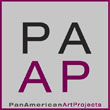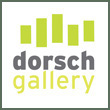« Reviews, Uncategorized
Fabian Marti

Fabian Marti, Lucide Dreams 1952, 2009, silver gelatin print 15.7” x 11.8” Courtesy of Fabian Marti, Gallery Peter Kilchmann, Zurich and Galleria Fonti, Naples.
Trudelhaus - Baden, Switzerland
By Oliver Kielmayer
Similar to his recent presentations at Peter Kilchmann Gallery in Zurich and the Swiss Institute in Rome, Fabian Marti (*1979) again merges single works such as photographs, sculptures and video into a large, site-specific display. At Trudelhaus, this is ever so challenging, as the gallery comprises three rather small rooms on three different floors. Marti’s reaction to this is the installation of a large cubist structure that goes from bottom to top, seemingly penetrating the dividing ceilings, ending as a simple cube on the third floor and acting as a plinth on which a single sculpture is displayed. The whole structure seems like a metaphor for a hidden but complex and widespread structure that is necessary for a conventional presentation of a single work of art.
The structure provides an entrance on the ground floor where a video inside reveals Marti’s creative process. Using a new feature of the QuickTime Player that records the screen while he works, Marti has given us a kind of insight into the artist’s mind as he leisurely browses the Internet and different folders on his computer. Even if the video is based on a simple effect, the result is impressive: ghostlike, the cursor moves over the screen, opening new windows and files, arranging a profusion of various data into a script that makes sense, but remains enigmatic. The reference to the mysterious is no coincidence, as Marti has always been interested in supernatural phenomena, altered states of consciousness and shamanism. Different cultures have different strategies to enter these realms beyond reality, be it religion, cult rituals or drugs, and Marti’s choice of motifs–African masks, tribal ceremonies, mushrooms–must definitely be seen within this context. The following artistic interaction, however, is a more rational declination of these motifs by means of photomechanical and digital processes. The simultaneous fascination for the mysterious unknown, as well as for experimental analysis, was key to Modernism, and indeed Marti examines his motifs with a modernist, media-based strategy. Interestingly enough, it is exactly this media-reflexive approach that allows the works to preserve an archaic momentum.
(March 4 - April 11, 2010)
Oliver Kielmayer is the director of Kunsthalle Winterthur.


































